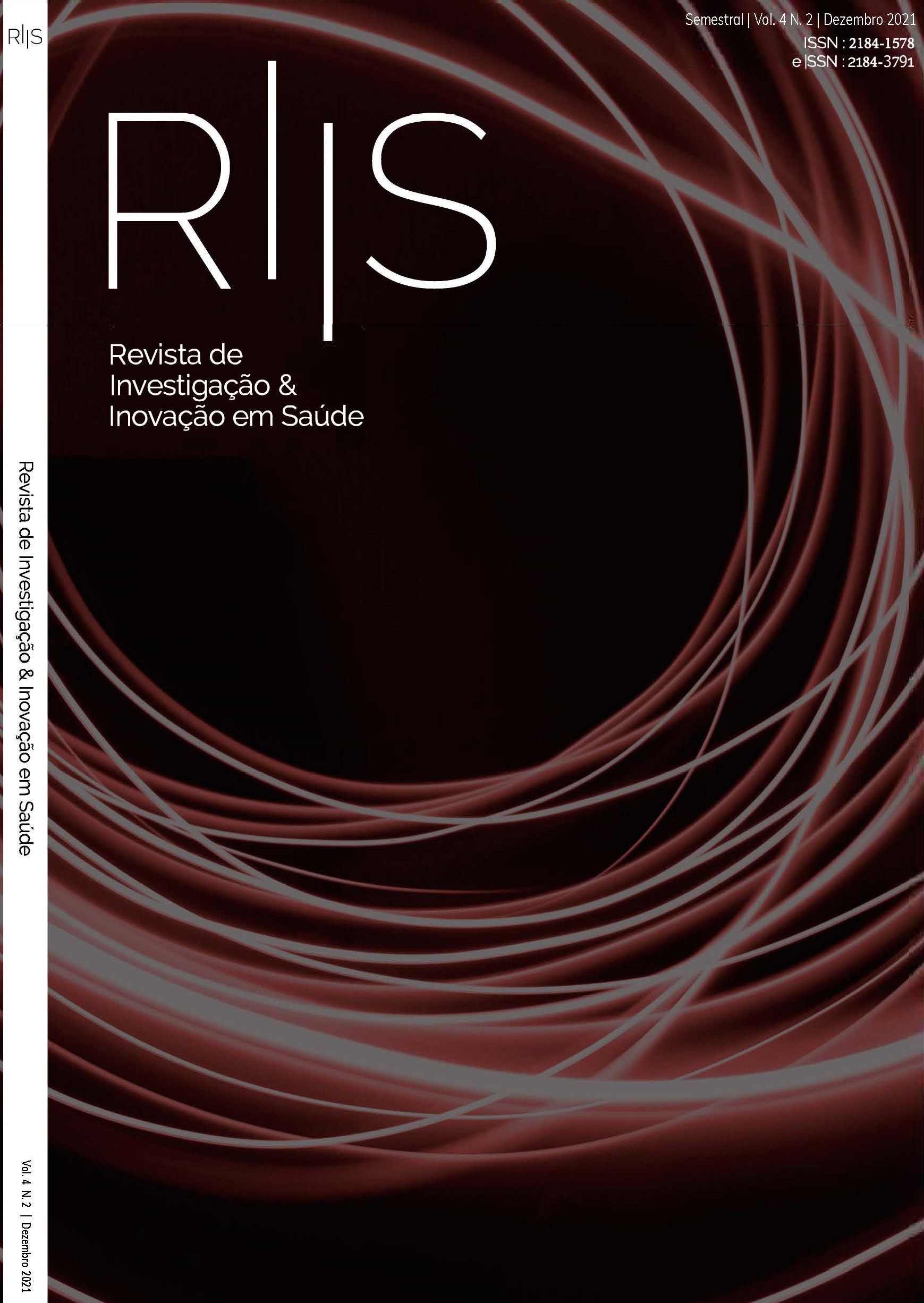Influencia de la proporción enfermero-usuario en la contención física en psiquiatría: revision sistemática
DOI:
https://doi.org/10.37914/riis.v4i2.137Resumen
Marco contextual: la restricción física en servicios psiquiátricos es una práctica común que puede comprometer la libertad, la autodeterminación, la dignidad y vida de una persona. Asociado con los esfuerzos para minimizar su uso, el factor de proporción enfermera-usuario há sido poco estudiado. Objetivo: analizar la influencia de la relación enfermero-usuario en los servicios psiquiátricos sobre el uso de contención física y aislamiento. Metodología: revisión sistemática de literatura, según metodología del Instituto Joanna Briggs (JBI). Se incluyeron estudios sobre servicios psiquiátricos para pacientes hospitalizados publicados hasta el 12/10/2020. Resultados: se seleccionaron 1208 estudios, incluidos 4 observacionales. Uno analizó la proporción y otros el número de enfermeras / profesionales. Dos observaron el índice y duración del aislamiento, y otros también observaron la restricción física. Dos concluyeron que el aumento en el número / proporción de enfermeras disminuye el uso y la duración de las medidas restrictivas, y otros dos lo contrario. En el estudio que se analizó la relación enfermeras-usuarios se observó una reducción de estas medidas. Conclusión: no fue posible determinar clara asociación entre la mejora en la proporción enfermera-usuario en servicios psiquiátricos y la reducción en el uso de medidas restrictivas. Se recomienda realizar más investigaciones para identificar resultados sólidos.
Citas
Allen, E., Fetzer, J., & Cummings, S. (2020). Decreasing Duration of Mechanical Restraint Episodes by Increasing Registered Nurse Assessment and Surveillance in an Acute Psychiatric Hospital. Journal of the American Psychiatric Nurses Association, 26 (3), 245–249.https://doi.org/10.1177/1078390319878776 DOI: https://doi.org/10.1177/1078390319878776
Aromataris, E., & Munn, Z. (Eds). (2020). JBI Manual for Evidence Synthesis. https://doi.org/10.46658/JBIMES-20-01 DOI: https://doi.org/10.46658/JBIMES-20-01
Bowers, L., & Crowder, M. (2012). Nursing staff numbers and their relationship to conflict and containment rates on psychiatric wards-a cross sectional time series poisson regression study. International Journal of Nursing Studies, 49(1),15-20. https://doi.org/10.1016/j.ijnurstu.2011.07.005 DOI: https://doi.org/10.1016/j.ijnurstu.2011.07.005
Direcção Geral de Saúde. (2011). Orientação nº 021/2011. Orientação da DGS. DGS.
Direcção Geral de Saúde. (2007). Circular Normativa. Medidas preventivas de comportamentos agressivos / violentos de donetes - contenção física. DGS.
Donat, C. (2002). Impact of improved staffing on seclusion/restraint reliance in a public psychiatric hospital. Psychiatric rehabilitation journal, 25(4), 413–416. https://doi.org/10.1037/h0094994 DOI: https://doi.org/10.1037/h0094994
Entidade Reguladora de Saúde. (2015). Acesso e Qualidade nos Cuidados de Saúde Mental. ERS.
Huf, G., Coutinho, E., Ferreira, M., Ferreira, S., Mello, F., & Adams, C. (2011). TREC-SAVE: a randomised trial comparing mevhanical restraints with use of seclusion for aggressive or violent seriously mentally ill people: study protocol for a randomised controlled trial. Trials Journal, 12(180), 1-9. https://doi.org/10.1186/1745-6215-12-180 DOI: https://doi.org/10.1186/1745-6215-12-180
Joanna Briggs Institute. (2019). JBI Reviewer's Manual. Australia.
Lan, H., Lu, C., Lan, J., Chen, C., Wu, J., Chang, P., & Lin, L. Y. (2017). Educational intervention on physical restraint use in long-term care facilities - Systematic review and meta-analysis. The Kaohsiung journal of medical sciences, 33(8), 411–421. https://doi.org/10.1016/j.kjms.2017.05.012 DOI: https://doi.org/10.1016/j.kjms.2017.05.012
Magnowski, S., & Cleveland, S. (2019). The impact of milieu nurse-client shift assignments on monthly restraint rates on an inpatient child/adolescent psychiatric unit. Journal of the American Psychiatric Nurses Association, 1-6. DOI: https://doi.org/10.1177/1078390319834358
McKeown, M., Thomson, G., Scholes, A., Jones, F., Baker, J., Downe, S. … Duxbury, J. (2019). "Catching your tail and firefighting": The impact of staffing levels on restraint minimization efforts. Journal of psychiatric and mental health nursing, 26(5-6), 131–141. https://doi.org/10.1111/jpm.12532 DOI: https://doi.org/10.1111/jpm.12532
Moher, D., Shamseer, L., Clarke, M., Ghersi, D., Liberati, A., Petticrew, M. ... Stewart, L. (2015). Preferred reporting items for systemat Preferred reporting items for systematic review and meta-analysis protocols (PRISMA-P) 2015 statementic review and meta-analysis protocols (PRISMA-P) 2015 statement. Sistematic Reviews Journal, 4(1), 1-9. DOI: https://doi.org/10.1186/2046-4053-4-1
Mohr, W., Petti, T., & Mohr, B. (2003). Adverse effects associated with physical restraint. Canadian Journal of Psychiatry, 48(5), 330-337. DOI: https://doi.org/10.1177/070674370304800509
Moola, S., Munn, Z., Tufanaru, C., Aromataris, E., Sears, K., Sfetcu R…. Mu, P. (2020). Systematic reviews of etiology and risk. In: Aromataris, E., & Munn, Z. (Eds). JBI Manual for Evidence Synthesis. JBI. https://synthesismanual.jbi.global. https://doi.org/10.46658/JBIMES-20-08 DOI: https://doi.org/10.46658/JBIMES-20-08
Morrison, P. (1990). A multidimensional scalogram analysis of the use of seclusion in acute psychiatric settings. Journal of advanced nursing, 15(1), 59–66. https://doi.org/10.1111/j.1365-2648.1990.tb01673.x DOI: https://doi.org/10.1111/j.1365-2648.1990.tb01673.x
Morrison, P., & Lehane, M. (1995). The effect of staffing levels on the use of seclusion. Journal of psychiatric and mental health nursing, 2(6), 365–366. https://doi.org/10.1111/j.1365-2850.1995.tb00107.x DOI: https://doi.org/10.1111/j.1365-2850.1995.tb00107.x
Muir-Cochrane, E., Baird, J., & MacCann, T. (2015). Nurses' experiences of restraint and seclusion use in short-stay acute old age psychiatry inpatient units: a qualitative study. Journal of Psychiatric and Mental Health Nursing, 22(2), 109-115. DOI: https://doi.org/10.1111/jpm.12189
Nienaber, A., Heinz, A., Rapp, A., Bermpohl, F., Schulz, M., Behrens, J., & Löhr, M. (2018). Einfluss der Personalbesetzung auf Konflikte auf psychiatrischen Stationen [Influence of staffing levels on conflicts in inpatient psychiatric care]. Der Nervenarzt, 89(7), 821–827. https://doi.org/10.1007/s00115-018-0521-5 DOI: https://doi.org/10.1007/s00115-018-0521-5
Perkins, E., Prosser, H., Riley, D., & Whittington, R. (2012). Physical restraint in a therapeutic setting; a necessary evil?. International journal of law and psychiatry, 35(1), 43–49. https://doi.org/10.1016/j.ijlp.2011.11.008 DOI: https://doi.org/10.1016/j.ijlp.2011.11.008
Steinert, T., Birk, M., Flammer, E., & Bergk, J. (2013). Subjective distress after seclusion or mechanical restraint: one-year follow-up of a randomized controlled study. Psychiatric services (Washington, D.C.), 64(10), 1012–1017. https://doi.org/10.1176/appi.ps.201200315 DOI: https://doi.org/10.1176/appi.ps.201200315
Descargas
Publicado
Cómo citar
Número
Sección
Licencia
Derechos de autor 2021 Ricardo Matos, Ana Cruz, Bruna Ferreira, Carla Gonçalves, Diana Correia, Emanuel Almeida

Esta obra está bajo una licencia internacional Creative Commons Atribución 4.0.















